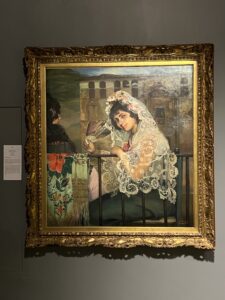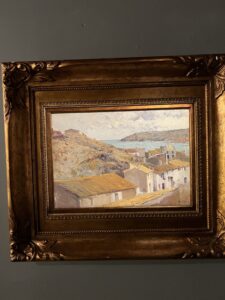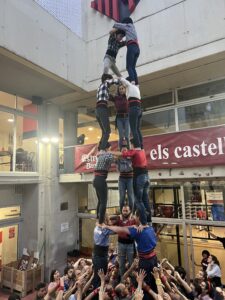For this museum visit, we got to stay in Barcelona! The museum of modernism was located just a few blocks from our CEA campus, and just a little bit further from our apartments. We had a local historian give us our tour of this museum and it was very fascinating! This museum highlighted the works of four famous artists from Catalunya, and Pablo Picasso, naming the collection the 4 Gats.
Our guide gave us a lot of good information about how the style of art changed in the beginning of Picasso’s time, and shifted towards a more modernistic style. The art began to depict the lives of modern Spanish workers in the middle class, and deterred away from the traditional extravagant painting styles that usually included religious themes and older clothing and buildings. This shift in the art world created a lot of change socially in Catalunya and began to affect the economic classes differently.


I was surprised to see so much work from the architect of La Sagrada Familia, Antoni Gaudi. I was not expecting a museum of modernism to have work from Gaudi’s time, but there was a decent-sized collection of furniture designed by him!
That evening after we made our trip to the museum of modernism in Barcelona, we went to check out a Casteller’s practice. When I first heard about what this is in school, I was confused but interested in this cultural practice. Castellers are a group of people who participate in people stacking, and creating human towers traditionally built during parades and festivals to entertain the crowds. In more modern times, Castellers participate in people stacking competitions. A practice native to Catalunya, it is meant to create a sense of community, teamwork and trust within the people, and is a source of pride and strength for many.

As nerve wracking as this was to watch, I’m glad we got to quietly sit in on a practice, and see for ourselves the trust and support between this group of people as they continue to practice their traditions.